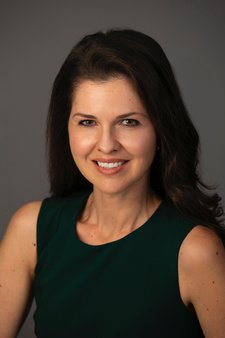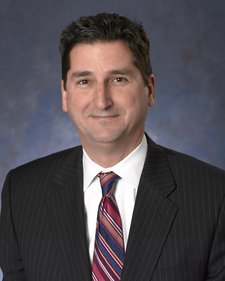
By Jill R Shah
Nov. 28, 2022
An unparalleled era of easy money came to a screeching halt in 2022, as central banks shifted gears to fight inflation. The US Federal Reserve raised its benchmark rate from near zero to 4% in a mere six months. Companies, countries and consumers that had borrowed heavily when doing so was cheap now faced new strains, just as banks rediscovered caution in lending.

iStock image
This sudden tightening of credit conditions not only increased the risks of recession and defaults but raised worries about financial vulnerabilities emerging that had previously been covered up by borrowing.
1. Why was money so cheap for so long?
Central banks opened spigots wide to keep the global financial crisis from triggering a depression, using low interest rates and other measures to try to stimulate business activity. They kept rates low for years in the face of a notably anemic recovery, then opened the faucets again when the pandemic struck: The Fed cut interest rates back to near zero and didn’t raise them until March 2022.
2. What did that lead to?
It helped fuel a period of extraordinary growth in US financial markets, save for the short, sharp pandemic drop in 2020. The US stock market rose more than 580% after the financial crisis, accounting for price gains and dividend payments. It also led to a massive increase in debt taken on by companies and countries. From 2007 to 2020, government debt as a share of gross domestic product globally jumped to 98% from 58%, and non-financial corporate debt as a share of GDP surged to 97% from 77%, according to data compiled by Ed Altman, professor emeritus of finance at New York University’s Stern School of Business. And in a hunt for better returns than safe debt assets like Treasuries offered, investors flooded companies with cash, buying bonds from risky ventures that paid higher yields while overlooking their lower credit quality. Yet despite the ballooning debt, inflation remained subdued in most developed economies -- in the US, it rarely reached the Fed’s target of 2%.
3. What changed?
Inflation arrived with a roar in 2021 as pandemic restrictions waned while supply chains remained disrupted. In 2022, exacerbated by energy shortages and Russia’s invasion of Ukraine, inflation reached over 9% in the US and 10% in the European region. Led by the Fed, central banks began raising interest rates at the fastest pace in over four decades. They’re aiming to slow growth by reducing consumer demand, hoping in turn that prices will cool, too. Between March and November, the Fed increased the ceiling of the rate it uses to manage the economy, known as the federal funds rate, to 4% from 0.25%. Economists expect the central bank will hike the rate to 5% by March 2023 and hold it there for most of the year.
4. What does this mean for investors and markets?
After the rate hikes began, the US equity market plunged as much as 25% from its peak, as investors braced for the slowdown the interest rate hikes would likely bring. Bond prices fell by the most in decades, as the prospect of new issu-ances paying higher rates made existing low-yield bonds worth less. Both investment-grade and high-yield companies cut back on borrowing. One of the most rate-sensitive areas of the US economy, the housing market, saw sales slow significantly. And newly cautious investors eschewed the riskiest assets such as leveraged loans.
5. What does it mean for consumers and companies?
For US businesses, average yields for newly issued investment-grade debt jumped to around 6% and high-yield debt jumped to nearly 10% by November. That comes on top of higher labor costs, especially in sectors like health care. Home buyers are facing sharply steeper monthly payments, as the 30-year fixed mortgage rate topped 7%, the highest level in two decades. And despite significant wage gains for US workers over the last two years, record inflation has begun to eat into incomes. Outside the US, the Fed’s rate increases also strengthened the dollar relative to other currencies, which meant that dollar-denominated sovereign and corporate debt in emerging markets became a lot more expensive to repay.
6. What risks come along with the shift?
Easy access to money in the US has led to higher and higher levels of debt among the riskiest corporate borrowers, especially those owned by private equity firms. A commonly cited measure of debt to earnings has ticked up in the leveraged loan market over the last 10 years. That means portfolios of collateralized loan obligations, which are loans bundled into bonds, grew more exposed to risks as well. Globally, zombie firms -- companies that don’t earn enough to cover their interest expenses -- have become more common. Higher costs across the board -- for capital, labor and goods -- has created expectations that the default rate will rise, especially among highly indebted companies.
7. Could there be another financial crisis?
What's moving marketsStart your day with the 5 Things newsletter.Sign up to this newsletter
Lending rules were tightened after the collapse of credit markets in 2008. Yet the speed at which rates are being hiked is increasing fears that something in the financial system will break. In September, a hedging strategy routinely used by UK pension funds backfired when yields on government bonds jumped faster than the models the funds used had allowed for. Intervention by the Bank of England was needed to calm market turmoil.
8. Are there reasons for optimism?
Yes, on several fronts. So far, US consumers and corporate borrowers broadly have been resilient. Easy access to markets in the wake of the pandemic enabled many companies to refinance their debt at low interest rates, meaning they won’t have to go back to the market immediately. And pandemic stimulus payments and subsequent higher wages set up households with a cushion to weather some level of economic slowdown. Overall, the share of risk in consumer obligations such as mortgages and auto loans has fallen since 2006, according to a UBS Group AG report.
© 2025 Bloomberg L.P.








